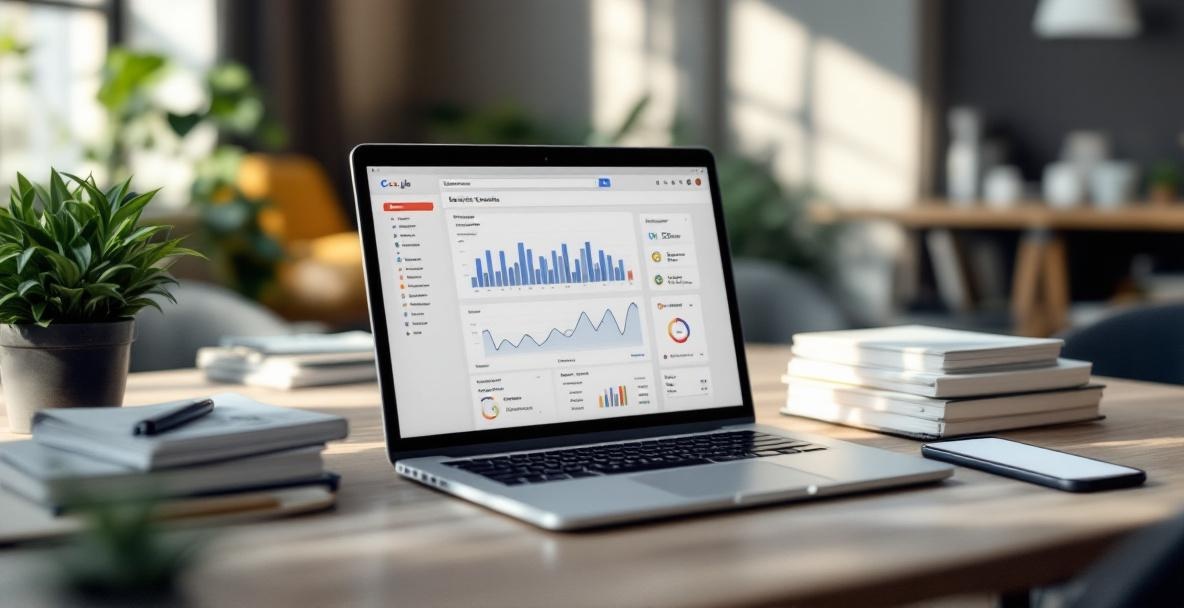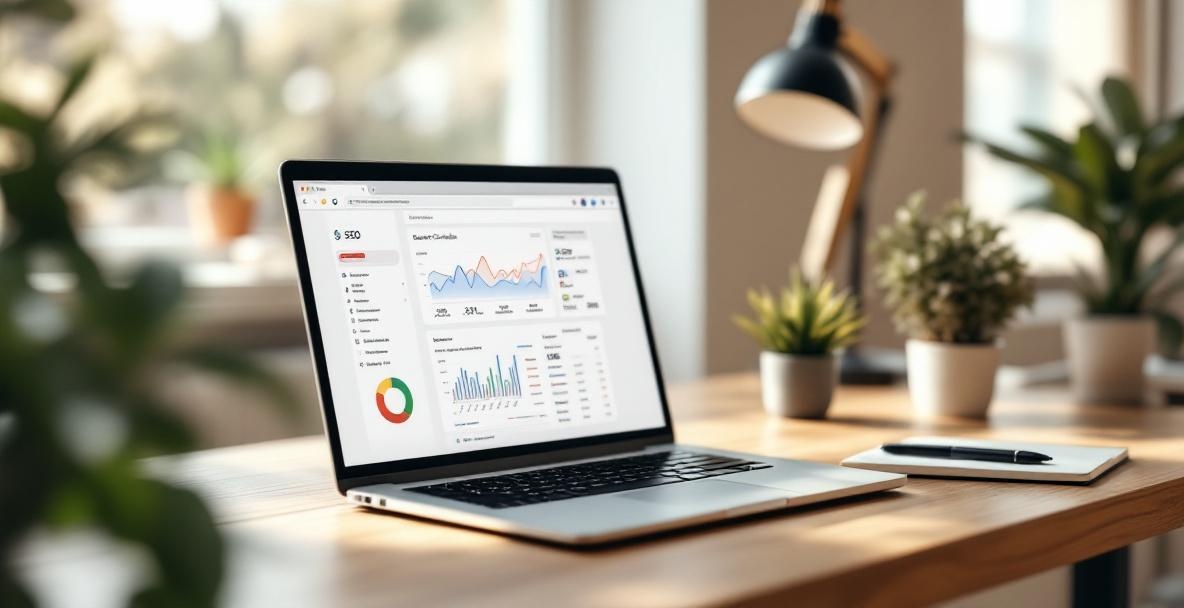Google Search Console is a game changer for site owners who want real data on how their pages rank. This free tool gives you direct insights from Google instead of relying on rough estimates. At SeoFlow, we have helped many businesses boost their SEO, and we are excited to show you these practical techniques.
Jump Right In with Google Search Console

What Makes This Tool Stand Out?
Google Search Console gives you clear details on how your site performs. It tells you which search queries drive traffic, points out technical issues, and shows you exactly how Google views your site. Every piece of information comes straight from the source, helping you shape a smarter SEO plan without the guesswork. For anyone serious about improving online visibility, learning to use this tool is a must.
Debunking the Common Myths
Many website owners mix up Search Console with Google Analytics. Analytics deals with what visitors do once they're on your site, while Search Console explains how they get there in the first place. The numbers might differ because Search Console provides real verified data from Google instead of estimates. And no need to be a tech expert to use it-this tool offers insights that anyone can understand with a bit of guidance.
Getting Started and Setting Up Your Account

How to Set Up Your Account
To get started you need to prove that you own or manage the site. Visit search.google.com/search-console and click on "Add Property." You can choose between domain verification, which covers all subdomains, or URL prefix verification for specific parts of your site. Domain verification generally offers broader coverage and usually involves adding a DNS record. Once you verify your site, Google starts gathering data right away. If you handle more than one website or need to share access with team members, the user management feature lets you set different access levels easily.
Getting Around the Main Dashboard
The dashboard may appear full of options at first, but it is built to help you find what matters quickly. Look at the left sidebar where you see main areas like Performance, Indexing, and Experience. The Performance section shows how your site is visible in search and how many clicks you receive. Indexing tells you which pages Google can read, while Experience focuses on how users interact with your content. Upon logging in, you will see an overview that highlights recent changes and any pressing issues. Take a few minutes to explore these sections; the filtering options allow you to zero in on specific data, making it easier to spot trends or problems.
Checking Performance Data for SEO Wins
The Most Important Numbers to Watch
The Performance report is at the core of what Search Console offers. Focus on Total Clicks, Total Impressions, Average CTR and Average Position. Clicks count the visits coming from search results and impressions show how often your pages appear in results. The click-through rate reveals if your titles and meta descriptions are attractive enough for visitors. Average position gives you an idea where your pages usually rank, but keep in mind that rankings can vary with each search. Watch trends over time rather than single-day numbers; sudden changes could hint at algorithm updates or technical issues, while steady improvement means your SEO efforts are paying off.
Knowing Who Is Visiting Your Site
Search Console shows you the search terms that drive traffic. The Queries report can spark ideas for new keywords based on what people are really looking for. Take a close look at the clicks and impressions to uncover opportunities. The Pages report pinpoints which content brings in the most traffic, so you can build on what works. In addition, reports on countries, devices, and search appearance help you understand your audience better. For example, geographic data might point to new markets, and device data tells you if your mobile setup is effective. Use these insights to fine-tune your content strategy in a way that truly resonates with your visitors.
Uncovering and Fixing SEO Problems

Finding Crawl Issues That Affect Your Ranking
Crawl errors block Google from accessing certain pages, which can hurt your search ranking. In the Coverage report, errors are flagged, and it is best to focus on fixing these problems first since they prevent pages from showing up in search results. Common issues include server errors, missing pages (404 errors), blocked access, and troublesome redirects. Addressing them might involve checking your hosting setup for server issues, restoring missing pages or redirecting them properly, or updating your robots.txt file if accidental blocks occur. Tackling these issues on high-value pages can lead to quick improvements and better overall site performance.
Solving Mobile Usability Issues
Mobile users now make up a large portion of web traffic, so it is essential that your site works well on all devices. The Mobile Usability report calls out problems like small text, tightly packed buttons, and pages that do not fit screen sizes properly. These issues not only annoy visitors but also send negative signals to Google. Work with your developer to adopt a responsive design; this may mean changing CSS settings to use fluid measurements instead of fixed sizes or adjusting the layout for better spacing. Once you have made these changes, use the URL Inspection tool to check that Google acknowledges them. Enhancing mobile usability can improve both your ranking and how long visitors stay on your site.
Advanced Tips for Using Google Search Console

How to Use the URL Check Feature
The URL Check feature lets you see how Google reads a specific page on your site. Enter the URL to get detailed information on its status, crawl history, and any issues that affect its performance. If a page is not ranking as well as expected, this tool might reveal problems with JavaScript, differences in mobile layout, or misconfigured robots tags. You can also view a snapshot of how Google interprets the page. After fixing issues, request that Google recrawls the page to incorporate your updates sooner. This feature is especially helpful for troubleshooting and keeping your site in top condition.
Exploring What the Links Report Tells You
The Links Report shows you how your site is connected both internally and externally. In the external section, you can see which sites link to yours and what anchor texts they use, helping you identify strong backlink sources. Internally, the report explains how different pages are connected and which ones might need more linking support. Understanding this network can help boost weaker pages and overall site authority. Regularly checking this report helps you avoid potential penalties and ensures that your link-building strategy remains on track. Use these insights to continuously improve your site's structure and SEO performance.
Bringing It All Together
What You Have Learned and How to Move Forward
Regularly using Google Search Console turns raw data into useful steps that boost your site's ranking. We have covered setting up your account, understanding key performance metrics, and resolving tech issues while offering advanced tips like using the URL Check feature and exploring the Links Report. Carve out a little time each week or month to review these insights so that your site can stay on track and grow steadily. Taking action on these insights is the best way to make meaningful improvements and drive more traffic.
Join Our Community
We love hearing your thoughts and success stories. At SeoFlow, we are all about sharing ideas and helping each other grow. Drop your experiences in the comments or join one of our monthly webinars to dig deeper into advanced SEO techniques. Always feel free to reach out with questions or ideas.
Ready to automate your SEO insights and take action at scale? Try SeoFlow today and transform your Search Console data into traffic-generating content that ranks. Our AI-driven platform seamlessly integrates with your existing SEO data to create, optimize, and publish content that addresses your specific ranking opportunities-all while maintaining your unique brand voice.




